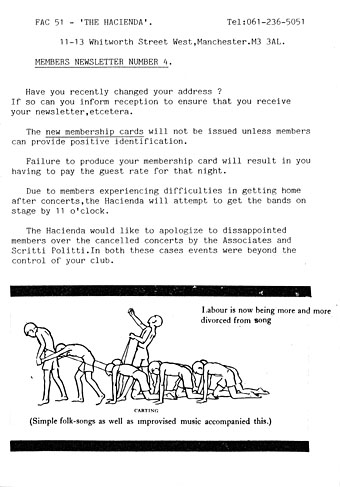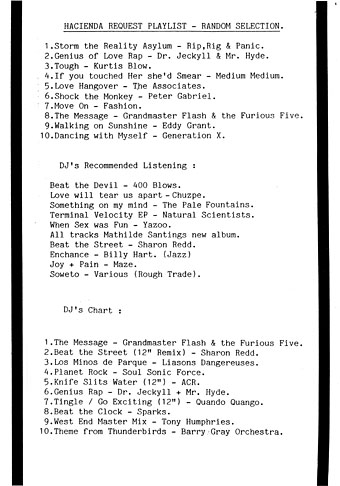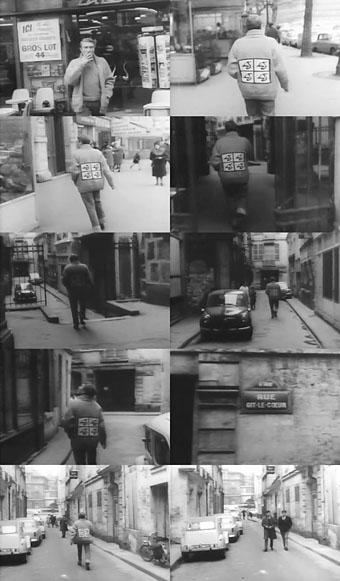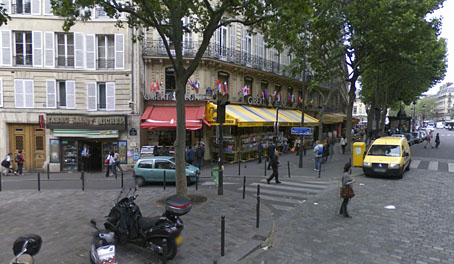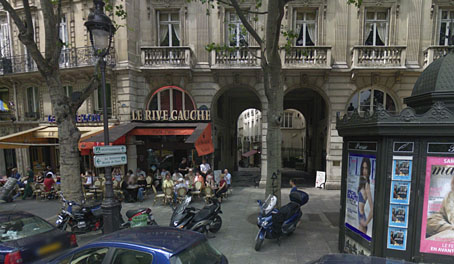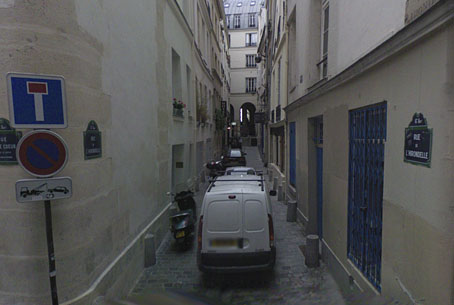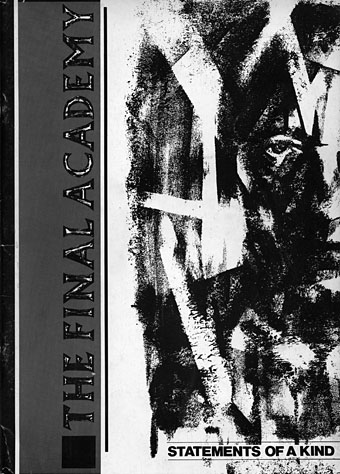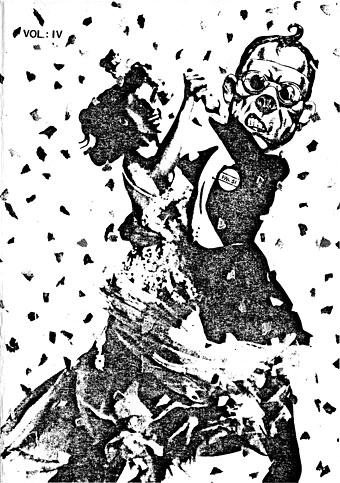
Haçienda Members’ Newsletter IV, 1982. (The head collaged onto the male figure is from RanXerox by Tanino Liberatore.)
Searching through some papers at the weekend turned up something I’d completely forgotten about: a members’ newsletter for Manchester’s Haçienda club. When the place first opened you needed to be a member to get in, unless you already knew a member in which case you could be signed in as a guest. One reason the place was so empty in its first couple of years was the restricted access, a policy they later dropped.
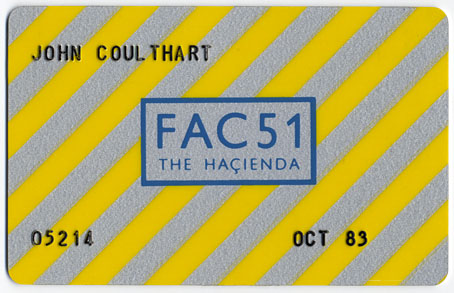
I paid for my membership in September 1982 since I was eager to see William Burroughs appearing in the Final Academy event on October 4th. I think the newsletter must have arrived with the nice Peter Saville-designed card. If there were any other newsletters after this I never received any but then I was never a conscientious club-goer and only went there if there was a decent band playing.
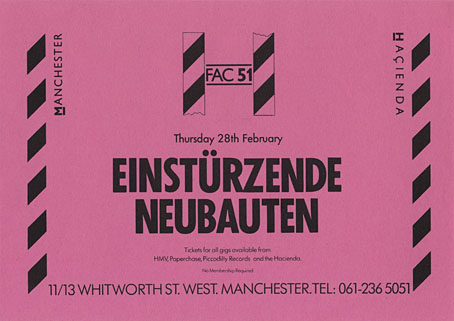
And speaking of decent bands, I also found this flyer, the only one I have from that period. Einstürzende Neubauten played the Haçienda twice, in August 1983 and February 1985, and I saw them on both occasions. The flyer is for the second event and is a lot more typical of Haçienda products than the fanzine-style newsletter. Neubauten’s first appearance there was sparsely attended but remains one of the best events I’ve witnessed. This was at the tail end of their metal-bashing period, and the performance that night involved a lot of hammering, flames, showers of sparks and broken glass flying into the audience. The climax came when one of them picked up the pneumatic road-drill they used for their noise-making and drilled straight into the concrete wall at the side of the stage. The machine was left hanging there to the consternation of the club staff. A few months later they staged their notorious performance at the ICA in London which was cut short when they started dismantling the stage. The second Haçienda gig drew a larger crowd but was a more subdued affair which would have disappointed those who were yelling for destruction between the songs.
The Haçienda is demolished now so that drilling incident may be seen as a precursor of the inevitable. But the history persists in exhibitions like the recent one at the V&A in London which recreated some of the decor. The typewritten and photocopied members’ newsletter shows a more humble origin than the usual “design classic” label that gets endlessly recycled. Further page scans follow, or you can download a PDF I made. The last two scans in this post are a sheet of guest passes for members to fill, and that ultimate low-tech item: a handwritten and photocopied events list for late 1982. I don’t remember Jah Wobble playing the day after the Burroughs event; I would have liked to have seen that one as well.
